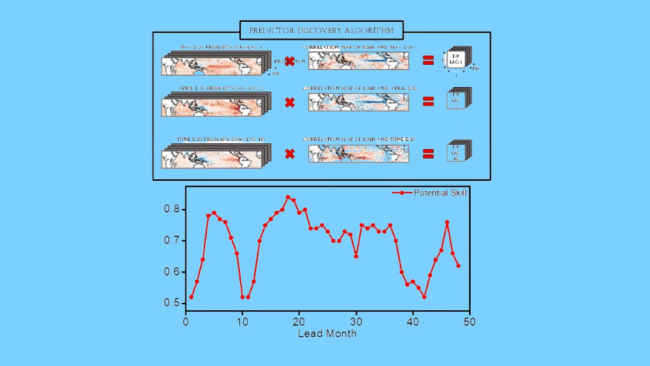An artificial intelligence-powered program that was recently developed could make the Indian Summer Monsoons (ISMR) more predictable up to 18 months in advance. The Ministry of Science and Technology suggests the predictor discovery algorithm (PDA), which was created using a single ocean-related variable (temperature, salinity or density), might permit expert forecasts of the ISMR in time for the creation of efficient agricultural and other economic strategies for the nation.
The widely used sea surface temperature (SST) is insufficient for the calculation of long-lead predictions of ISMR, according to researchers at the Institute of Advanced Study in Science and Technology (IASST), located in Guwahati, a self-governing unit of the Department of Science and Technology (DST). They discovered this was caused by the fact that all lead months had low prospective ISMR skill estimates generated by the predictor discovery algorithm (PDA) utilizing SST-based predictors.
Also read: Prompt engineering for AI excellence
The success of the model, according to the statement from the ministry, depended on artificial intelligence’s (AI) ability to apply what it had learned through 150 years of research using 45 physical simulations of climate to data collected between 1871 and 1974. Between 1871 and 1974, these observations were made.
Devabrat Sharma (IASST), Santu Das (IASST), Subodh K. Saha (IITM), and B N Goswami (Cotton University) managed to use a machine learning-based ISMR prediction model to make 18-month lead forecasts of ISMR between 1980 and 2011 with an actual skill of 0.65 thanks to the newly discovered basis of long-lead ISMR predictability.

The ocean thermocline depth (D20) over the entire tropical belt between 1871 and 2010 was projected onto the correlation map between ISMR and D20 over the same period by the team, which included members from IASST, the Indian Institute of Tropical Meteorology (IITM), Pune, and Cotton University, Guwahati. This method yields a predictor at any lead month.
Also read: Who saves the AI-makers?
According to the new formula, 18 months preceding the ISMR season, the expected ability of ISMR is at its highest (0.87, with 1.0 being the highest). The level of regularities in the yearly variability of its drivers determines the stability of the ISMR’s annual variability in each lead month.
For more
technology news,
product reviews, sci-tech features and updates, keep reading
Digit.in or head to our
Google News page.
For all the latest Technology News Click Here
For the latest news and updates, follow us on Google News.
